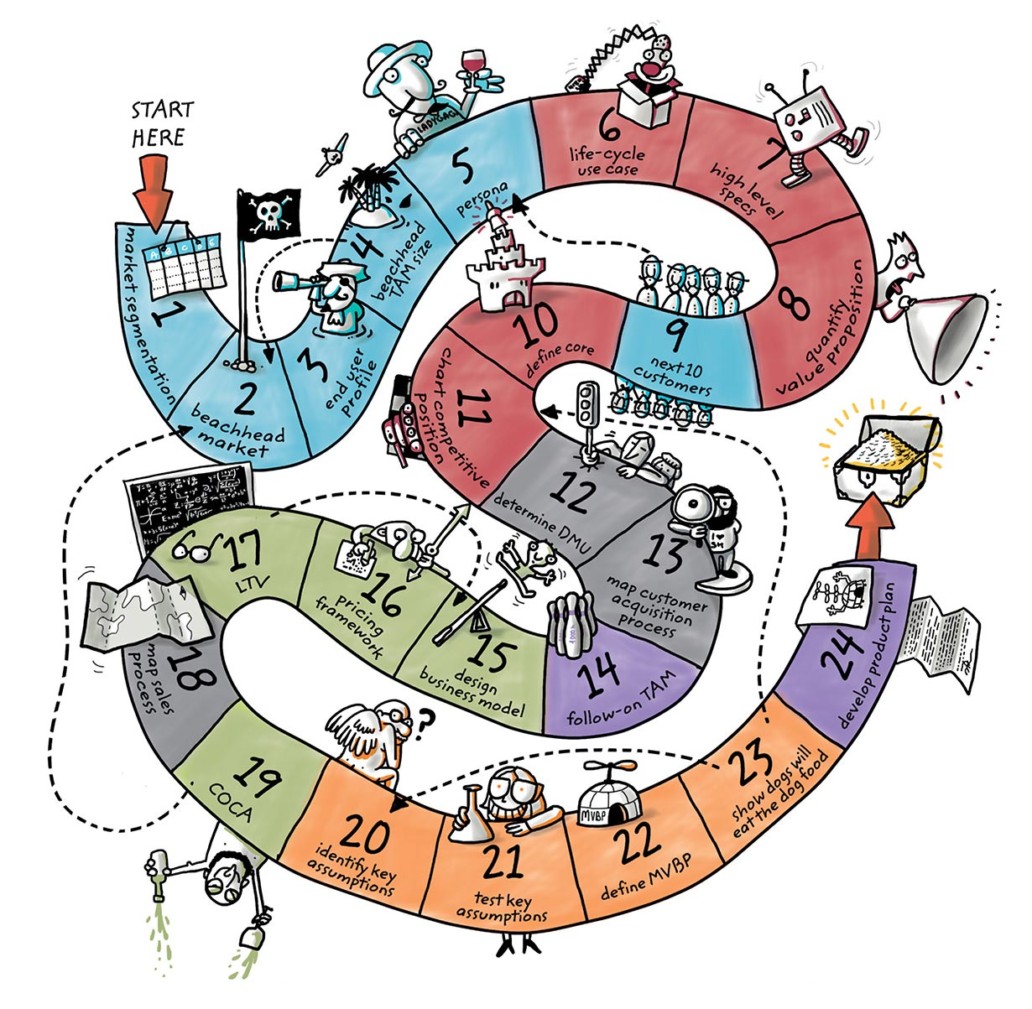Entrepreneurship: Resources
Who doesn’t want to create the next great product, amaze the world, and reap the reward? It’s something that many of us won’t ever be able to fit into our lives, due to the choices we make and the constraints that follow, but it’s always fun to think about, and some of the ideas can be applied to class project ideas.
Disciplined Entrepreneurship
Bill Aulet designed Disciplined Entrepreneurship as a structured way to pursue a novel product venture. It captures many ideas that are popular in startups. Below is its “road map”, linked directly from the site:

(From https://www.d-eship.com/wp-content/uploads/2019/03/poster-uai-1032x1009.jpg, copyright (C) Bill Aulet.)
That road map has too many steps for us to consider in a class project, but some of them we can think about. These are listed below.
3. End User Profile. Describe what your primary end user “looks like”. What are their capabilities? What are there deficiencies? Why? You need to keep focused on your end user so that you build a product that actually meets their need.
7. High Level Specification. Create a visually compelling draft product brochure. Why? This will keep you focused on providing the functionality that you promise in your brochure, which should be the most compelling functionality for the user.
8. Quantify the Value Proposition. Briefly describe the value your product will create for the customer.
10. Define Your Core. Describe the single thing that your product will do better than any others. This will help your project effort to focus on what really matters.
15. Define Business Model. Describe how you will make money off your product. There are many ways: product purchase, subscriptions, ads, etc. What’s yours?
20. Identify Key Assumptions. Write down what assumptions you are making about why your product should be successful or is needed. Are you sure that you are right about each of these?
22. Define Minimum Viable Product. Detail what is the minimum set of features your product must have in order to be useful to a user. This is V1.0 of your product!
23. Eat Your Own Dog Food. If at all possible, use your product yourself as it is nearing V1.0. If you simply cannot be a user (perhaps your product is for astronauts!), get a few early adopters to begin using your product. Pay them if necessary!
Other Resources
The site above has a top right menu with “articles” and “resources”; the “people to follow” link looks interesting.
This article talks about how games get developed
A Harvard Business Review article on launching a startup right out of college; HBR often has great articles about being in the business world in general.
A site on starting a startup.
Another startup advice guide.
A Forbes 35-step guide to starting a business; that’s a lot but some important info in there.
